Hike & Walk | Christchurch and Banks Peninsula | New Zealand
Discover the best Hikes & Walks in Christchurch and Akaroa
Text | Anninka Kraus
Photography | Tobias Kraus

New Zealand Canterbury
A flat-bottomed boat is poled along by a punter in Edwardian attire and glides down the gentle turns of a willow-fringed river in a beautiful botanic garden. A historic single arch stone bridge spanning the river and ducks quacking in mock surprise complement this scene plucked from a film set for an Edwardian-era period drama – or from real life in present-day Christchurch.
A punting tour on the Avon River through Hagley Park is decidedly touristy, the rest of the rich English heritage found in New Zealand’s oldest and third-largest city, however, is genuinely beautiful.
The destruction of most listed heritage buildings and historic landmarks in the inner city in the 2011 earthquake, in particular, iconic gothic Christ Church Cathedral and The Art Centre didn’t change that. Although the city, of course, has changed. A decade after the earthquake and downtown Christchurch is still scarred by vacant lots and abandoned half-demolished buildings but slowly transforming into an eclectic mix of old and new – this may sound cliché, but it is a particularly fitting expression in this case.
I’m always amazed by the incredible strength and compassion that Christchurch has shown in dealing with tragedy. First in the aftermath of the earthquake and more recently in the wake of the racially motivated terror attack on two mosques in the city.
It’s a beautiful city and one of the few in New Zealand that I recommend to visitors – not particularly for hiking, although there are many lovely walks in the area, which we have listed below. Also, Christchurch is within easy reach of Arthur’s Pass if you’re interested in more challenging hikes in alpine terrain.
It’s a 2-hour drive or 2.5-hour train ride to the national park and village located on the Main Divide of the Southern Alps and both, the Great Alpine Road and TranzAlpine train ride are considered one of the most scenic journeys in the country if not the world.
jump ahead
The 2011 Christchurch earthquake
“They are us”. About the deadliest mass shooting in New Zealand history








View of Lyttelton Harbour at sunset.
what to expect.
New Zealand’s oldest and third-largest city has a rich English heritage, listed heritage buildings and historic landmarks many of which have been extensively restored after the 2011 earthquake
Christchurch has many lovely walks and cycle trails and is within easy reach of Arthur’s Pass if you’re interested in more challenging hikes in alpine terrain
Visit Akaroa on Banks Peninsula – Canterbury’s oldest town still celebrates its French heritage and the peninsula’s rugged valleys and beautiful jagged coastline are a great place for hiking
London Street in Lyttelton, a port town on Banks Peninsula where the first English settlers landed in 1850, is lined with beautiful local craft shops, restaurants, and cafes
location & trail information.
Directions: Christchurch is located on the east coast of the South Island and easily accessible by car from the north and south via SH1 and from the West Coast via Arthur’s pass. If you’re travelling from the West Coast and keen to go on one of the world’s most scenic train journeys, take the TranzAlpine railway that connects Greymouth and Christchurch by traversing the Southern Alps via Arthur’s Pass.
Christchurch Airport is one of five international airports in New Zealand and is served by most carriers operating in New Zealand. If you’re flying in from overseas and only want to travel the South Island, look for direct flights to Christchurch. The city centre is a 20-minute drive from the airport and accessible by public transport.
How to get around: everything in Christchurch is accessible by foot, bike, and public transport / you’ll need a car for the 1.5-hour drive to Akaroa on Banks Peninsula south-east of Christchurch however, as there’s no public transport beyond the city suburbs.
When to visit: All year / the climate in Christchurch is temperate and relatively dry with distinct seasons / Christchurch has significantly less rainfall than Auckland and Wellington, but the winters tend to be rather cold.
Where to eat: Christchurch: Twenty Seven Steps, The Last Word whisky and cocktail lounge, 5th Street, The Christchurch Farmers’ Market in Riccarton, Inati / Akaroa: Ma Maison Restaurant, The Little Bistro, Mandala Restaurant
Where to stay: Christchurch: The George, The Tack Rooms / Sumner: Sumner Black Hut / Akaroa: Coombe Farm Bed & Breakfast / Tai Tapu: Birdsong View
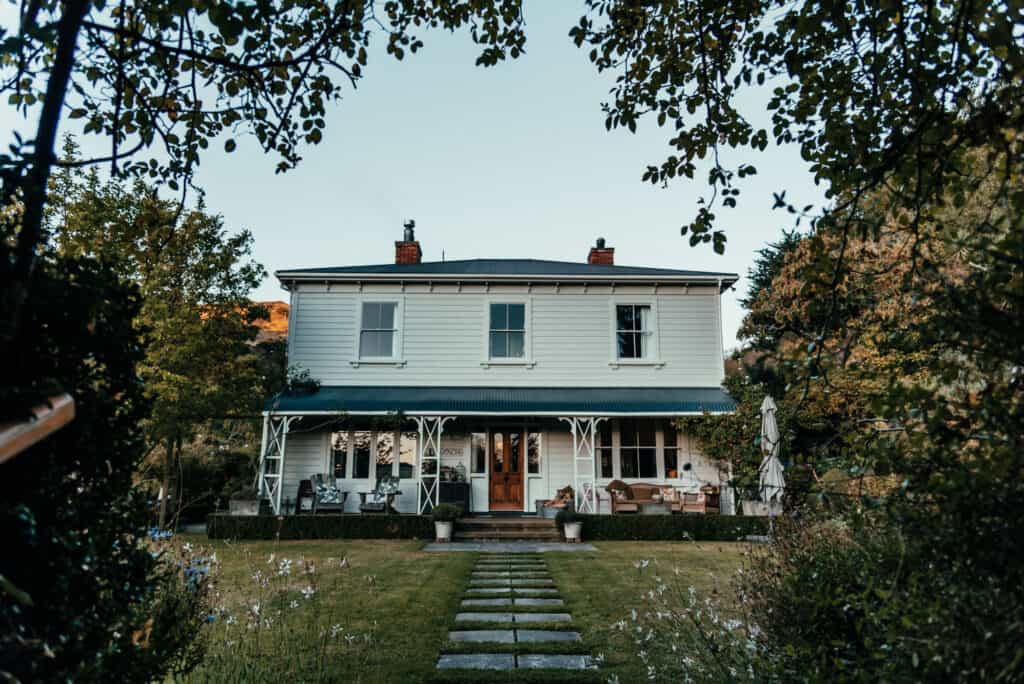
Gorgeous Coombe Farm near Akaroa on Banks Peninsula offers a beautiful Kiwi farmstay experience.

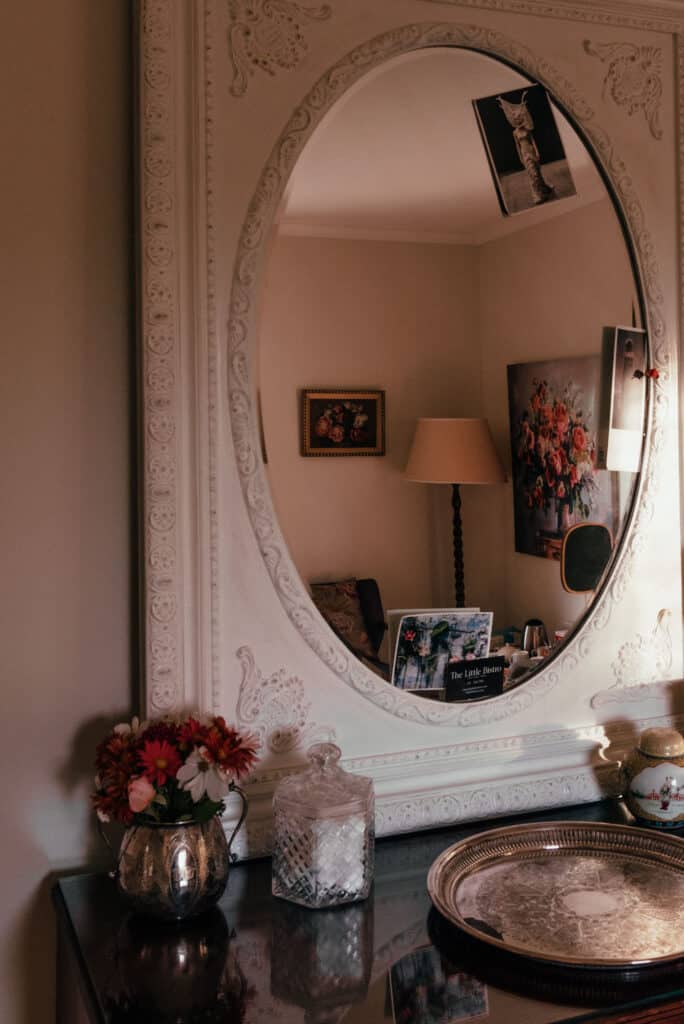
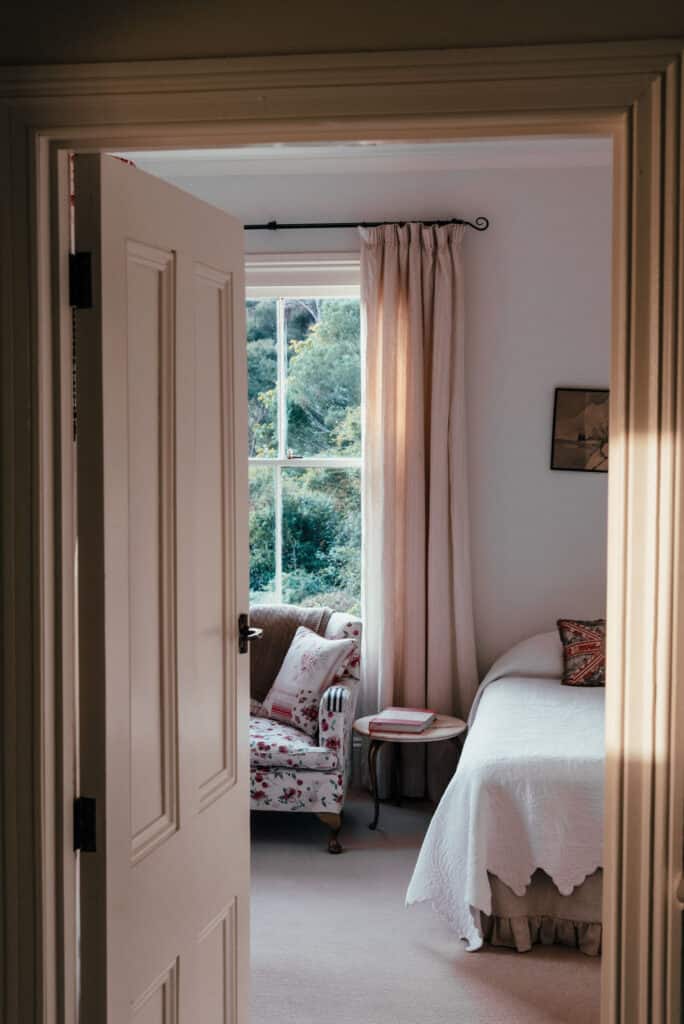
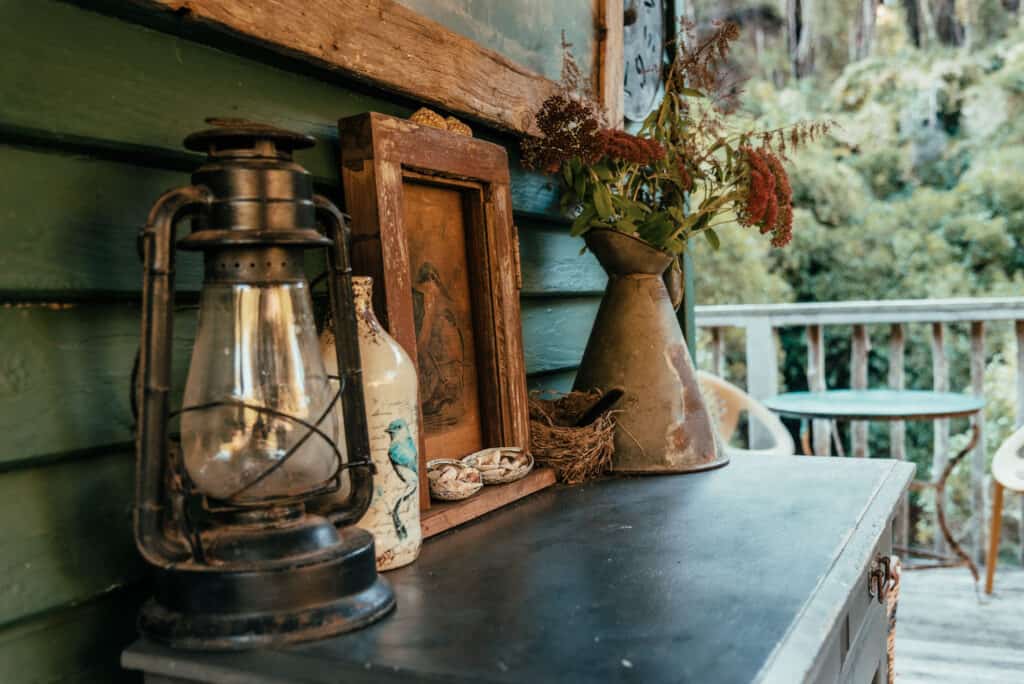
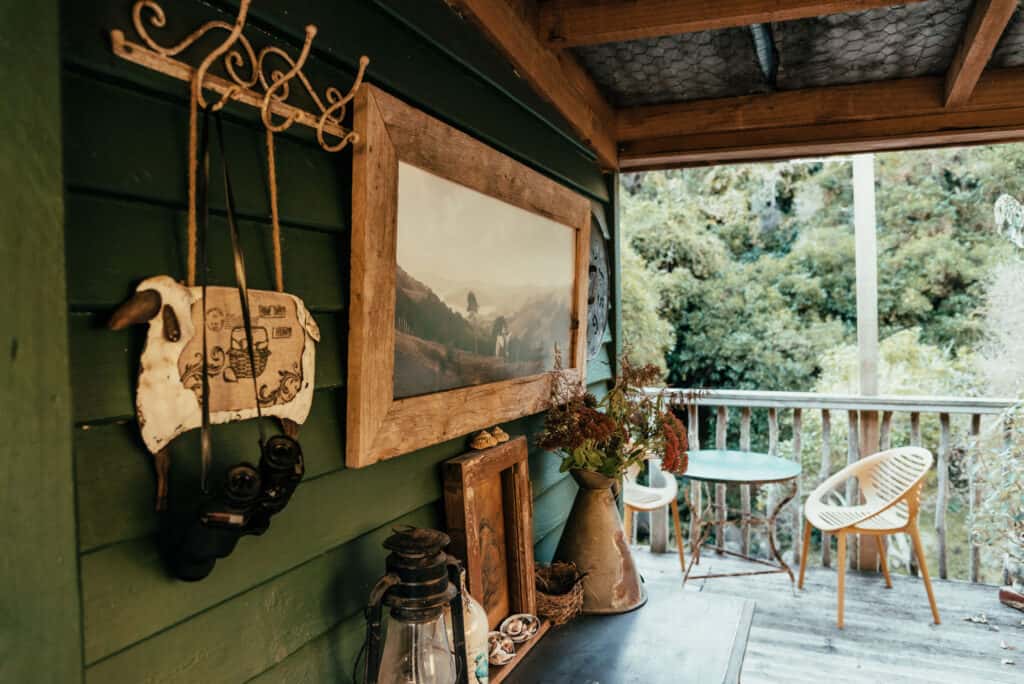
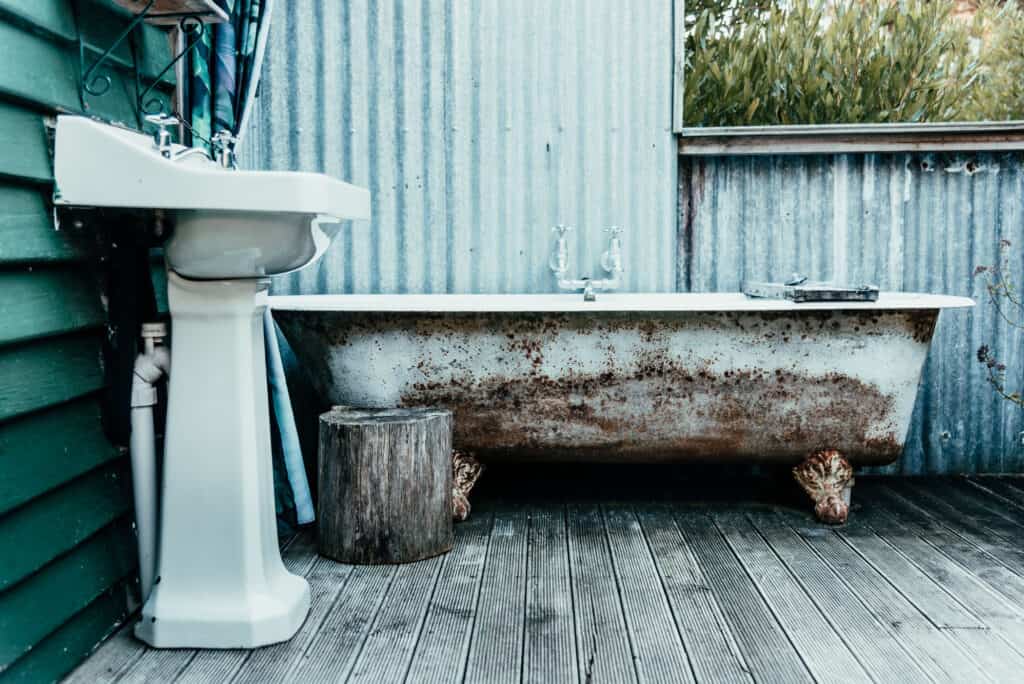
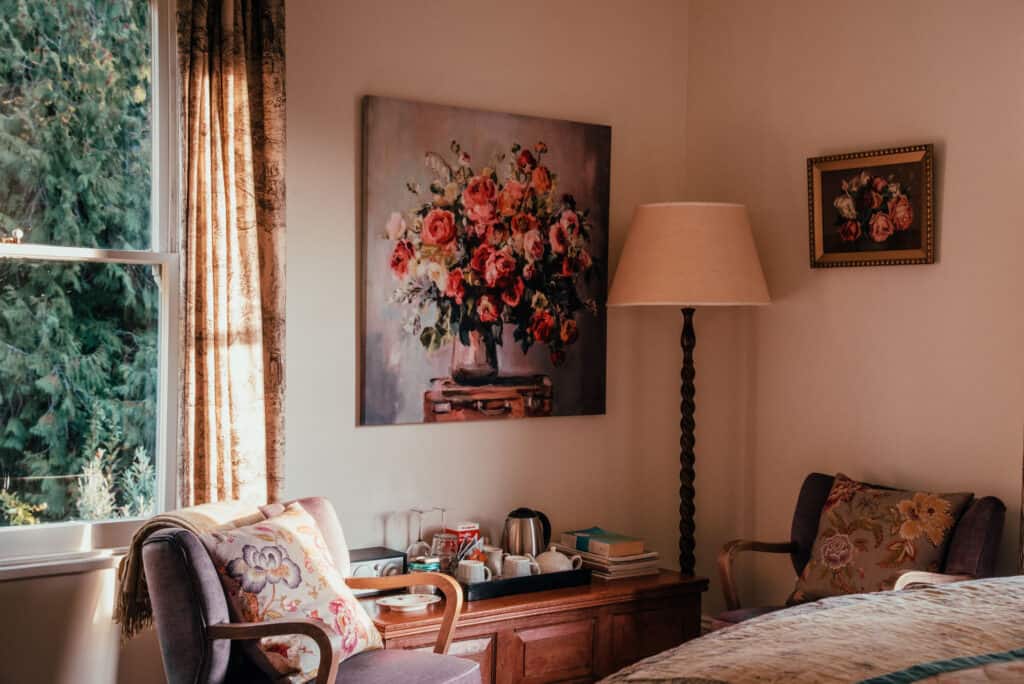
Treat yourself to the king or queen bedroom in the main house with a full breakfast is served in the farmhouse kitchen every morning, or hide away in the gorgeous rustic Shepherds Hut.
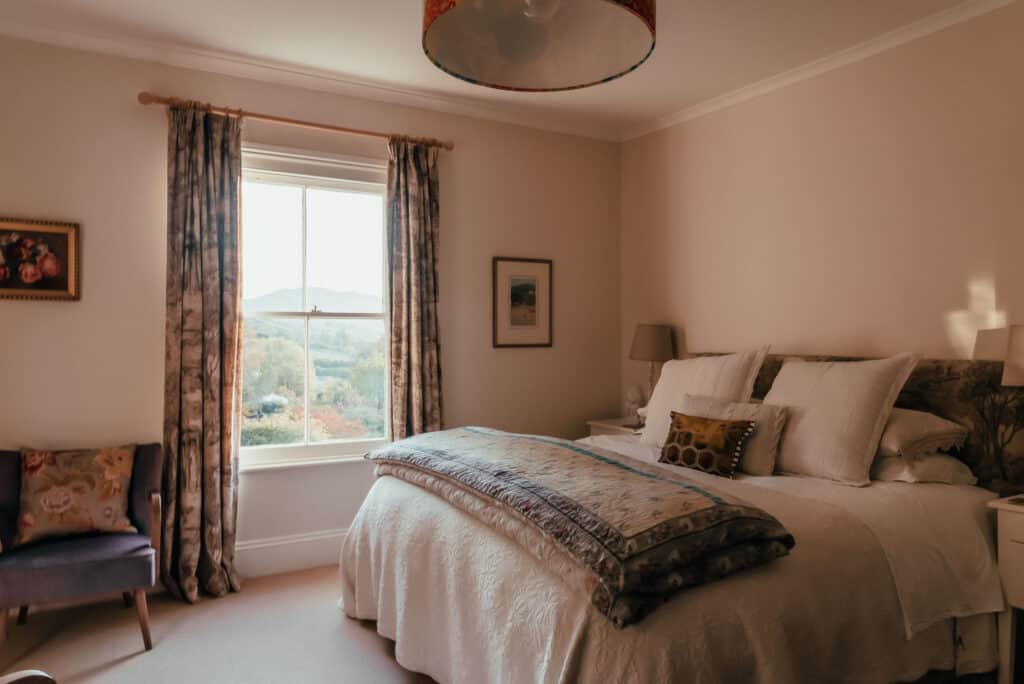
Banks Peninsula and Akaroa
Just as the English heritage perseveres in Christchurch, so does a whiff of Frenchness in Akaroa, Canterbury’s oldest town set on the eastern side of Akaroa Harbour on Banks Peninsula.
First sighted by Captain James Cook on his Endeavour voyage in 1770m, it was French settlers, who, unaware that the British had signed the Treaty of Waitangi in 1840, arrived here on the Comte de Paris later that same year with high hopes of establishing a French colony.
Their hopes dashed when they learned that the British had already proclaimed sovereignty over New Zealand, most decided to make this their home anyway. Almost 200 years later little true French heritage remains, but Akaroa celebrates la belle vie nonetheless – the French street names, the Tricolore flapping in the sea breeze, and restaurants with names like Ma Maison serving Kiwi cuisine with a French twist.
It’s little more than a marketing ploy and touristy but nonetheless charming. And successful. Akaroa is the port of call for almost a hundred cruise ships every season (October – April) and with the arrival of each ship about 5000 passengers and crew swamp this little seaside town of 600.
Try to time your visit to not coincide with the arrival of one of these cruise ships, which in peak season will admittedly not be easy.
Also, you don’t want to be driving on the narrow winding road between Akaroa Village and Christchurch when coaches shuttle thousands of passengers back and forth. Luckily, it’s easy to escape the crowds when you’re exploring the more remote corners of Banks Peninsula on one of the walking and hiking tracks running through the Hinewai and Purple Peak nature reserves. Both are beautiful restoration projects looked after by the Maurice White Native Forest Trust and accessible by trails that start in the village centre of Akaroa.
The peninsula is almost round in shape and protrudes into the Pacific Ocean just south of Christchurch. It was an island once, made up of several ancient volcanoes, but annexed by the mainland when the Canterbury Plains extended eastwards.
Erosion then sculpted these volcanoes into rugged valleys with sharp ridgelines and a beautiful jagged coastline. The barren terrain with little native vegetation allows sweeping views over the peninsula and the ocean but is a sad example of the effects of colonialism on New Zealand’s native vegetation.
When European settlers arrived in the mid 19th century, the peninsula was densely forested. A few decades later and commercial logging operations and farming had decimated all but less than 1% of the forest. Nowadays, the regeneration and protection of native vegetation in different stages of development is being actively managed by a trust on Hinweai and Purple Peak reserves.
our personal non-hiking favourites in Christchurch
Stroll through Hagley Park and the Botanic Gardens that were established in 1863.
This complex comprises more than 20 Gothic Revival buildings and dates back to 1877 when this was the University of Canterbury’s town site.
The centre was severely damaged in the 2010 and 2011 earthquakes and closed for years, but many of the buildings have now been extensively restored and once again house galleries, arts and crafts stores, museums, eateries, and performing arts events.



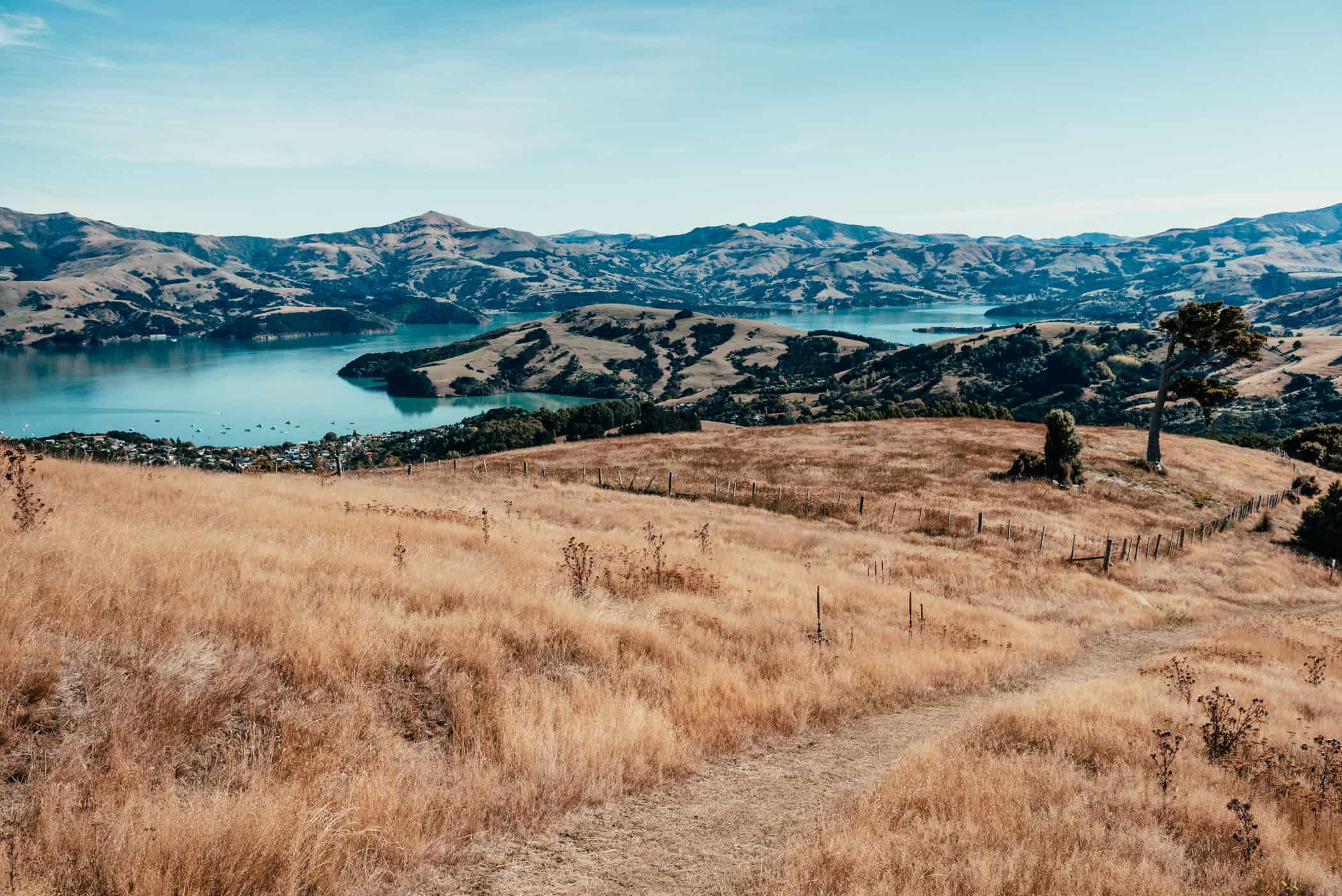


The Round the Mountain via Curry Track offers outstanding views over the peninsula and Akaroa Harbour from the summit ridgeline.
Hike | Loop trail | 3 hours
Godley Head Loop Track
Arguably the most popular family-friendly loop walk in Christchurch, Godley Head is packed on summer weekends. Arrive early to secure one of the parking spots before the crowd of swimmers and picnickers flocks to Taylors Mistake beach.
Hike | Loop trail | 1 hour
Sugarloaf Circuit
The Sugarloaf Circuit is an easy-going 2.4km loop walk in the Port Hills, starting across Dyers Road from the Sign of the Kiwi Cafe and circling around Sugarloaf, a 496m peak topped by a large communications tower.
Cycle | Out & back trail | 3-5 hours
Christchurch to Little River Cycle Trail - Motukarara to Little River
Christchurch to Little River Cycle Trail is a 46-kilometre shared walkway and cycle path running from Hornby in Christchurch to Little River on Banks Peninsula. Never straying far from the road, the trail allows you to hop and off at several points and cycle individual sections as you please.
We cycled the 20-kilometre Motukarara to Little River leg that starts at the restored Motukarara Railway Station and follows the 19th century Little River Branch railway line on a raised old railway embankment along the shores of two lagoons, Lake Ellesmere and Lake Forsyth. Like most other rail trails, this flat and wide family-friendly path is rated Grade 1 and caters to all riding abilities.
From the slightly elevated position on the raised embankment, we had marvellous views across the lagoons and adjoining wetlands and the Southern Alps in the distance. Lake Ellesmere is the fifth largest lake in the country, a shallow lagoon separated from the Pacific Ocean by a 25-kilometre-long sand spit, Kaitorete Spit, and telling by the great number of camouflaged bird hides spread across the wetlands, it must be a paradise for bird watchers. Lake Forsyth is significantly smaller but also home to plenty of birdlife, including many indigenous species.
After a short on-road section, the trail ends at Little River, a small arts and crafts township that makes for a nice coffee stop.
track details.
Start/End: Motukarara Railway Station
Route: Motukarara Railway Station – Little River – Motukarara Railway Station
Distance: 45.5km return
Time: 3-5 hours return
Difficulty: This is a flat, family-friendly trail rated Grade 1 with car parks at both ends of the trail and toilets at Catons Bay and Little River township.
Best time to cycle: all year
Permits: none required
Options: the track is also suitable for walking and running | you can do the trail in its entirety or shorter trail sections and arrange for a shuttle transfer
Further information: Official Little River Rail Trail website





The Christchurch to Little River Cycle Trail follows the 19th century Little River Branch railway line on a raised old railway embankment along the shores of Lake Ellesmere and Lake Forsyth.
Hike | Loop trail | 4-6 hours
Round the Mountain via Curry Track
Hike | Loop trail | 5-6 hours
Misty Peaks Track
On the Misty Peaks Track, you’re not in it for the track itself, which mostly runs along farm tracks and backcountry roads on this 17-kilometre, 5-6-hour look walk. It’s the magnificent views of Misty Peaks and Hinewai reserves, Akaroa Harbour, and the ocean that make this hike worthwhile.
Hike | Out & back trail | 2-3 hours
Skyline Circuit
The Skyline Circuit is an 11-kilometre loop track to Stony Bay Peak summit at 528m in upper Hinewai Reserve, which shares most trail sections with the Round the Mountain via Curry and Misty Peak tracks.
Starting at the bottom of Rue Balguerie in Akaroa, turn left into Purple Peak Road at Nettle Creek Studio, go past Mt. Vernon Lodge and follow Purple Peak stock route to Purple Peak Saddle.
From the saddle, follow the Summit Track climbing to Stony Bay Peak summit plateau, the highest point of Hinewai Reserve with outstanding views over Hinewai and Purple Peak reserves, Akaroa Harbour, and the Pacific, then descend on the Tara Track to Stony Bay trailhead. Turn right into Stony Bay Road to return to Akaroa or follow the Misty Peaks Track skirting around Mt Berard through Misty Peaks Reserve.